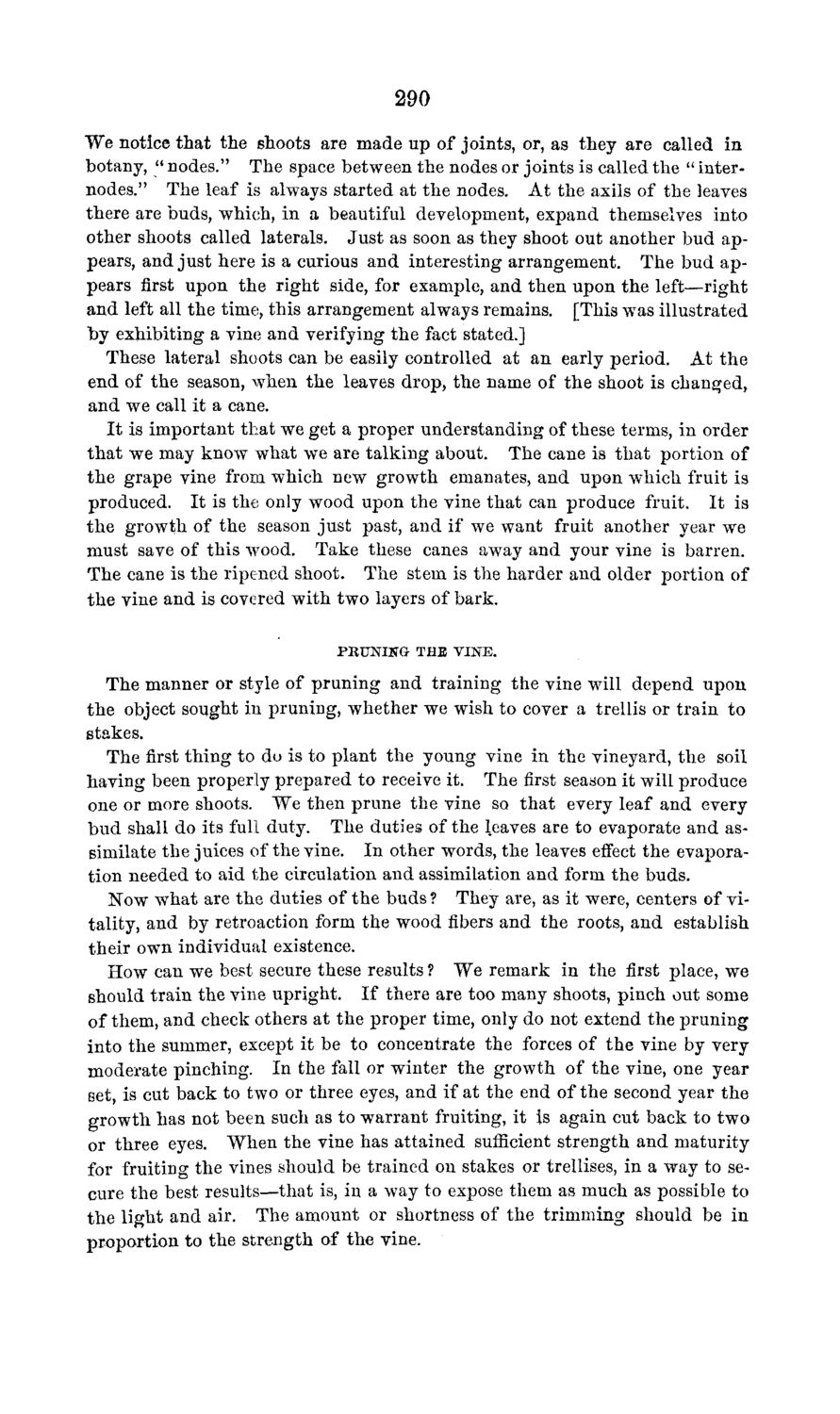| |
| |
Caption: Board of Trustees Minutes - 1869
This is a reduced-resolution page image for fast online browsing.

EXTRACTED TEXT FROM PAGE:
290 We notice that the shoots are made up of joints, or, as they are called in botany, " nodes." The space between the nodes or joints is called the " internodes." The leaf is always started at the nodes. At the axils of the leaves there are buds, which, in a beautiful development, expand themselves into other shoots called laterals. Just as soon as they shoot out another bud appears, and just here is a curious and interesting arrangement. The bud appears first upon the right side, for example, and then upon the left—right and left all the time, this arrangement always remains. [This was illustrated by exhibiting a vine and verifying the fact stated.] These lateral shoots can be easily controlled at an early period. At the end of the season, when the leaves drop, the name of the shoot is changed, and we call it a cane. It is important that we get a proper understanding of these terms, in order that we may know what we are talking about. The cane is that portion of the grape vine from which new growth emanates, and upon which fruit is produced. It is the only wood upon the vine that can produce fruit. It is the growth of the season just past, and if we want fruit another year we must save of this wood. Take these canes away and your vine is barren. The cane is the ripened shoot. The stem is the harder and older portion of the vine and is covered with two layers of bark. PRUNING THE VINE. The manner or style of pruning and training the vine will depend upon the object sought in pruning, whether we wish to cover a trellis or train to stakes. The first thing to do is to plant the young vine in the vineyard, the soil having been properly prepared to receive it. The first season it will produce one or more shoots. We then prune the vine so that every leaf and every bud shall do its full duty. The duties of the leaves are to evaporate and assimilate the juices of the vine. In other words, the leaves effect the evaporation needed to aid the circulation and assimilation and form the buds. Now what are the duties of the buds ? They are, as it were, centers of vitality, and by retroaction form the wood fibers and the roots, and establish their own individual existence. How can we best secure these results ? We remark in the first place, we should train the vine upright. If there are too many shoots, pinch out some of them, and check others at the proper time, only do not extend the pruning into the summer, except it be to concentrate the forces of the vine by very moderate pinching. In the fall or winter the growth of the vine, one year set, is cut back to two or three eyes, and if at the end of the second year the growth has not been such as to warrant fruiting, it is again cut back to two or three eyes. When the vine has attained sufficient strength and maturity for fruiting the vines should be trained on stakes or trellises, in a way to secure the best results—that is, in a way to expose them as much as possible to the light and air. The amount or shortness of the trimming should be in proportion to the strength of the vine.
| |